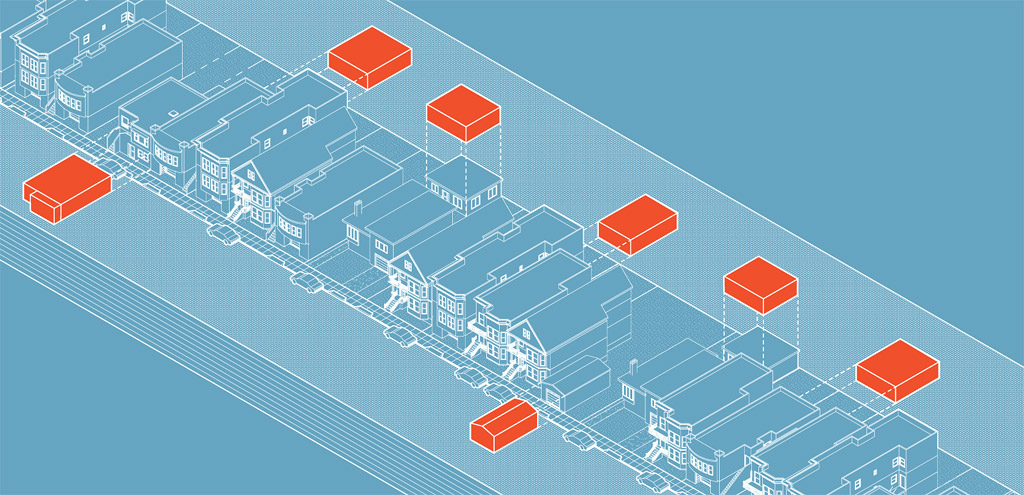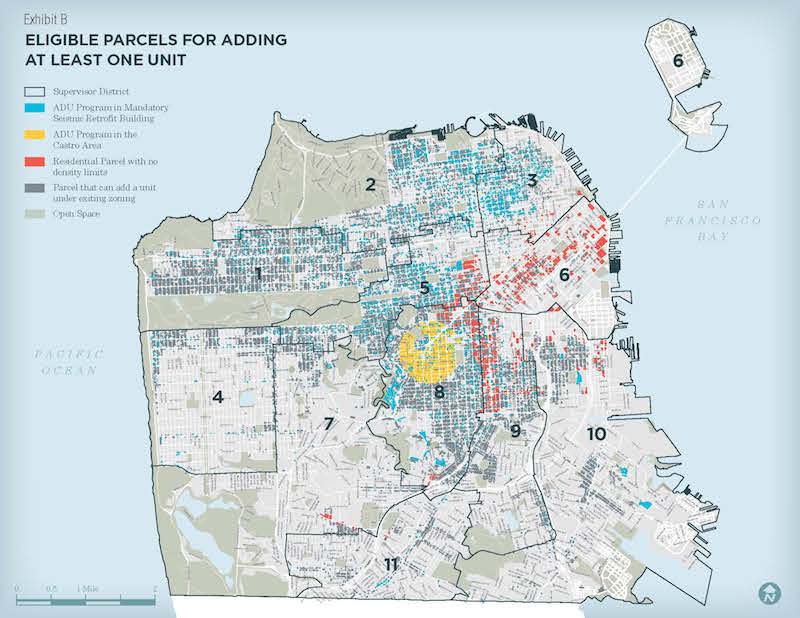San Francisco’s growing acceptance of accessory units – new units in existing buildings – reached another milestone this week as two ordinances permitting new units within existing buildings were unanimously approved by the Board of Supervisors on first reading. Supervisor Wiener’s ordinance permitted new units in his Supervisorial District (District 8), which includes the Castro, Mission Dolores, Noe Valley, Glen Park, and Diamond Heights. A similar ordinance by District 3 Supervisor Julie Christensen legalized new units in District 3 – Chinatown, North Beach, Russian Hill, Nob Hill, and the city’s Northeast Waterfront. These new units, known officially as Accessory Dwelling Units (ADUs), will be allowed exceptions from lot-area density limits, parking requirements, and other requirements of the Planning Code, but must comply with all Building Code requirements. Accessory Dwelling Units are a sustainable housing strategy that diversifies housing options and conserves neighborhood character. Units added to buildings currently subject to the City’s rent stabilization ordinance are also rent-stabilized; such buildings, built before 1980, comprise the overwhelming majority of residential buildings in both districts and citywide.

The Planning Department’s staff report attempted to estimate the number of new accessory units that will be created by these ordinances. The report estimated 779 units in District 3, and 1,778 in District 8, although the theoretical maximum is much higher – over 10,200 units in the two supervisorial districts.
These two ordinances are likely to add over 2,500 new rent-controlled units in existing buildings in San Francisco. That number could increase significantly if accessory unit legalization is expanded to other supervisorial districts. Livable City helped author a similar ordinance, allowing new units in buildings being earthquake-safety retrofitted, that was approved in April; that ordinance is estimated to add thousands more new rent-stabilized units citywide.
San Francisco’s 175,000 rent-stabilized units keep the City affordable for hundreds of thousands of San Franciscans, but, as the city’s Housing Balance Report points out, hundreds of rent-stabilized units are lost each year to no-fault evictions (Ellis Act and owner move-in), condominium conversion, merger, and demolition. Permitting new units in rent-stabilized buildings is currently the only legal way to replenish San Francisco’s stock of rent-stabilized housing.
Over the past decade, affordable (mostly rent-controlled) units in San Francisco are being lost at nearly the same rate that the City has added affordable units – 6,560 affordable units were added, while 5,470 rent-stabilized units were lost, mostly to owner move-in evictions and Ellis Act evictions, along with unit merger, demolition, and conversion.
Livable City has helped to enact measures that add more permanently affordable units, and we are also working to reduce the loss of affordable units. One group of units that are particularly vulnerable are in-law units that are rent-controlled and habitable, but were originally built without permits. These illegal units affordably house thousands of San Franciscans. Most of those that meet building code requirements can now be legalized, thanks to David Chiu’s 2014 ordinance, and the Board of Supervisors voted this week to waive fees for legalizing units. San Francisco generally requires a hearing a the Planning Commission before a sound unit can be demolished, converted or merged, but illegal units can also be removed, and the residents evicted, with just a building permit; currently, 3 to 4 such units are being removed each week. We are currently working on legislation that would require increased scrutiny before these units could be removed.




